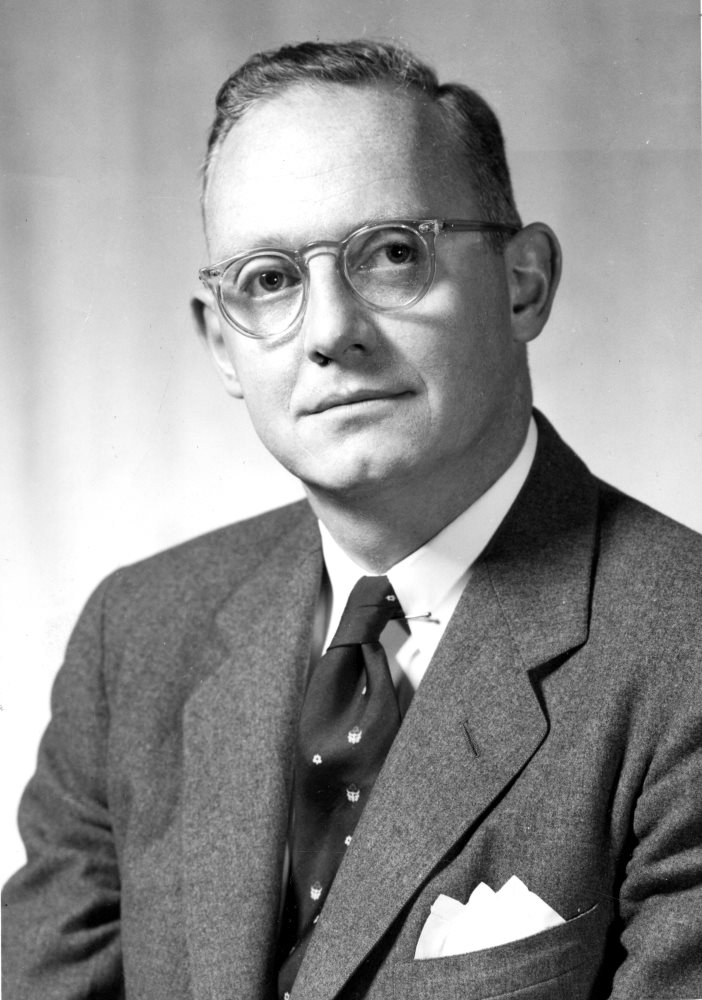Richard C. Lord
Richard C. Lord

OSA Fellow Richard C. Lord was born in Louisville, Kentucky on October 10, 1910. He graduated from Kenyon College, Ohio in 1931. He received the Ph.D. degree in physical chemistry from Johns Hopkins University in 1936. He spent two years (1936-38) as a Fellow of the United States National Research Council, first at the University of Michigan and then at the University of Copenhagen, Denmark.
In 1942, Dr. Lord came to MIT when the National Defense Research Committee called him to serve as technical aide and later as deputy chief of the Committee's Optics Division. His war work was concerned with some of the early efforts on guided missiles as well as with military applications of infrared radiation. His interest in the fields of military science continued, and he later served as member and chairman of the Panel on Infrared of the U.S. Research and Development Board, as member of the Technical Advisory Panel on Electronics of the Department of Defense, and as consultant to the Scientific Advisory Board of the U.S. Air Force. In recognition of his work in his field during World War II, Lord was awarded the Presidential Certificate of Merit By President Truman in 1948.
In 1946, MIT appointed him Director of the Spectroscopy Laboratory and in 1954, Professor of Chemistry. Dr. Lord was also a dedicated teacher and an inspired supervisor of graduate students. Lord established the first post-graduate training course in applied infrared spectroscopy held first at MIT and then at Bowdoin College. In collaboration with Professors George R. Harrison and J.R. Loofbourow, Lord published the widely-used text Practical Spectroscopy in 1948. He also served as editor in the field of optics for the McGraw-Hill Encyclopedia of Science and Technology.
Dr. Lord's research contributions were in the infrared and Raman spectroscopy of polyatomic molecules. He is considered a pioneer in the use of infrared radiation for the study of molecular structure and is widely recognized for contributions made to the interpretation of the infrared spectra of molecules in terms of their vibrational motion, and also to our understanding of the cohesion of molecules by means of hydrogen bonding. He developed experimental procedures for working in the infrared region. His achievements include the observation and interpretation of Coriolis-activated forbidden vibrational transitions, the synthesis and complete vibrational analysis of a large number of deuterated molecules, and the discovery and exploitation of the anomalous far infrared spectra of ring molecules. Toward the end of his career he became interested in biomolecules. His studies of the laser Raman spectra of proteins and nucleic acids opened a new field of research.
Dr. Lord received the Presidential Certificate of Merit in 1948, the Award in Spectroscopy from the Pittsburgh Spectroscopy Society in 1966, and was made an honorary member of the Society of Applied Spectroscopy in 1967. He served as a member and president (1967-61) of the Commission of Molecular Spectroscopy of the International Union of Pure and Applied Chemistry, and was president of The Optical Society in 1964, and received the Lippincott Award from them in 1976. He was also a fellow of the American Academy of Arts and Sciences. He served as a consultant with the Central Research Department of the du Pont Company from 1948 to 1980.
Dr. Lord died 29 April 1989 at the age of 79.
Document Created: 26 July 2023
Last Updated: 28 August 2023
